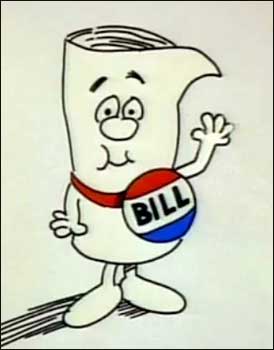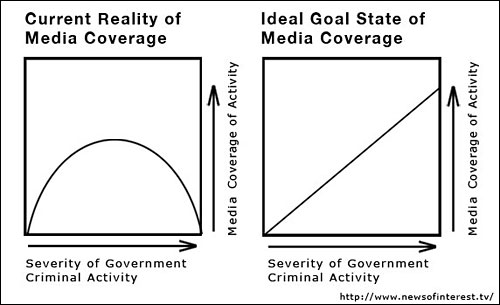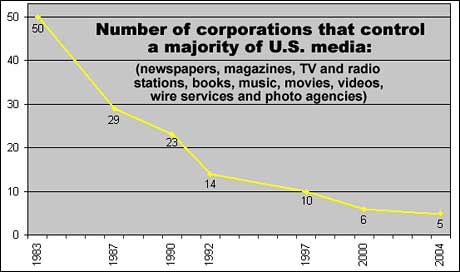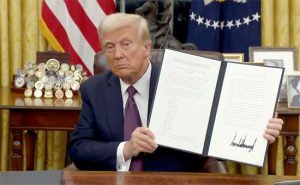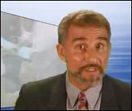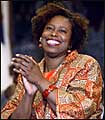Creating Political Change Through Communication and Legislation
by Edward Ulrich, updated September 23, 2022
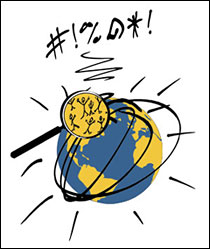
.
This article examines each of the steps in a problem solving process for peacefully creating political change in the United States through the use of communication and legislation— by using a process of defining a political problem, then defining a goal state with the problem eliminated, and then finding the most efficient processes of communication for reaching the goal state through the use of the legislative process.
It could be a theoretically simple task to fix many of the political problems in the United States quickly and peacefully, assuming enough citizens were sufficiently informed and cooperated with effective enough strategies for bringing about change.
In cases of repairing political misconfiguration or corruption, the legislative mechanism for creating political change is already in place, but many of the steps in the problem solving process have been strategically jammed in order to block effective change from occurring. Various potential blockages are identified within each of the problem solving steps, along with suggestions of methods for overcoming the blockages and accelerating the problem solving process.
An example of a problem solving process for fixing the issue of the use of fraudulent voting machines by the United States Government is also shown within each of the steps.
Article Notes
new:
September 23, 2022 - The content of this article has been updated.
Jump to parts of this article ..
Step 1: Identify a political problem
The biggest obstacle to identifying a problem is not knowing that the problem exists in the first place. Mainstream media outlets usually limit or censor the information they present in order to protect long-term agendas of a few controlling individuals and groups. The alternative media generally does not have as extreme of limitations, but it is frequently overlooked as “not being as credible” due to its often surprising subject matter. However, most major alternative media outlets do carefully check their facts and they often make use of information from mainstream news sources that has been buried or looked over.
Sample Problem: Identifying the problem of the use of fraudulent election machines by the United States Government
The following video contains information about how all electronic voting machines are able to be compromised.
With Diebold voting machines, every vote is stored on a memory card along with additional computer code. This video clip from the HBO special “Hacking Democracy” shows how an election can be altered through a person only having access to a memory card. The video shows how the hack works even with Diebold machines that only tabulate paper ballots, and how it is impossible to detect the fraud once it has happened.
NOTE: November 20, 2020— The fraudulent machines demonstrated in this video are essentially the same type that were used by many states in the 2020 Presidential Election! The Diebold company was acquired by Dominion in 2010, and Dominion’s machines are still very easily able to be hacked into. For examples of that, see this article that contains a 2018 New York Times video that demonstrates a Dominon machine being hacked, and see this 2018 Symantec video showing the large amount of venerabilities that are still in the most recent types of voting machines.
NOTE: November 20, 2020— The fraudulent machines demonstrated in this video are essentially the same type that were used by many states in the 2020 Presidential Election! The Diebold company was acquired by Dominion in 2010, and Dominion’s machines are still very easily able to be hacked into. For examples of that, see this article that contains a 2018 New York Times video that demonstrates a Dominon machine being hacked, and see this 2018 Symantec video showing the large amount of venerabilities that are still in the most recent types of voting machines.
This video is a part of the article A Summary of Election Fraud Issues in the United States.
Step 2: Identify an ideal goal state
Numerous information sources exist to help formulate an ideal goal state for any political problem, including searching the internet, information from sources such as documentary films, and consultation with individuals who have particular areas of expertise.
Sample Problem: Identifying an ideal GOAL STATE for the problem of the use of fraudulent election machines by the United States Government
Of the most important issues of corruption in the United States Government, the problem of election fraud is perhaps one of the easiest to fix, as it mostly involves the use of machines that can easily be replaced and election laws that can be changed. Also a wealth of experts exists that could help formulate a more viable alternative.
From the information in the previous section, it can be concluded that the use of electronic voting machines is intentionally not appropriately regulated, and that the Diebold company (now “Dominion”) is intentionally manufacturing voting machines that allow fraudulent altering of votes cast on their machines. Therefore an ideal goal state should include a plan of eliminating the company from any future government contracts and bringing criminal charges against certain individuals associated with the company.
It would be most preferable to eliminate the use of electronic voting machines altogether by replacing them with a more reliable and basic system of paper ballots. Paper ballots could be officially standardized and tamperproof— similar to paper currency such as a dollar bill.
Once a theoreticaly foolproof system of collecting and tabulating votes is established, it would also be a good idea to federalize the election process to ensure uniformity of the system throughout the country, similar to how only one currency is used rather than each state issuing its own. Many people are opposed to ideas of federalization of anything, however in this case it would be beneficial.
The organization FederalizeVotingStandards.org advocates for eliminating electronic vote counting in such a manner.
Step 3: Plan and implement a process of reaching the ideal goal state
Once a problem has been identified and an ideal goal state with the problem removed has been defined, it is then a matter of creating enough public interest in the subject to get an appropriate bill introduced into Congress, as well as creating enough public pressure to force politicians who otherwise would not support the changes to sign the bill into law.
This section explains methods for raising public awareness about issues, and also drawing public interest toward the legislative process of the issues being fixed. Potential blockages of the processes of communication and legislation are examined, as well as ways to circumvent those blockages.
Jump to parts of this section ..
Hub Article: Legislative Issues for Creating Political Change
This article explains legislative issues concerning creating political change, including summarizing the process of how a bill becomes a law; explaining the major political systems being used in the world today; explaining issues of United States politicians being loyal to political backers; explaining how the governmental system of the United States has migrated away from its original Constitutional principals; and explaining the public’s general lack of knowledge about the activities of Congress.
Selected information from this article:
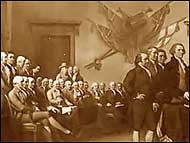
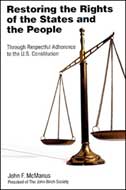
This article explains legislative issues concerning creating political change, including summarizing the process of how a bill becomes a law; explaining the major political systems being used in the world today; explaining issues of United States politicians being loyal to political backers; explaining how the governmental system of the United States has migrated away from its original Constitutional principals; and explaining the public’s general lack of knowledge about the activities of Congress.
Article Notes
new:
September 23, 2022 - Text of the article has been updated.
Selected information from this article:
Schoolhouse Rock - How a Bill Becomes a Law
View a classic animated short video showing the process of how a bill becomes a law.
View a classic animated short video showing the process of how a bill becomes a law.

This video describes aspects of the major types of government and economic systems that exist in the world, and it explains why the system of a capitalistic constitutional republic as outlined in the United States Constitution is preferable to other types of systems.

The 38 page booklet “Restoring the Rights of the States and the People” explains how the political system of the United States has migrated away from following the structure that has been specified in the U.S. Constitution, and it explains how elements of the current political system could be moved toward being restored to their original Constitutional principals.
Hub Article: Media Bias Effecting Awareness of Important Issues
This summary article explains why most media outlets don’t accurately report information about important political realities. Topics include explaining who the people are that most control the media, as well as their reasons, means, and methods of controlling it.
Selected information from this article:
Following is an excerpt from the Media Reform Information Center:
"In 1983, 50 corporations controlled the vast majority of all news media in the U.S. At the time, Ben Bagdikian was called "alarmist" for pointing this out in his book, The Media Monopoly. In his 4th edition, published in 1992, he wrote "in the U.S., fewer than two dozen of these extraordinary creatures own and operate 90% of the mass media"— controlling almost all of America's newspapers, magazines, TV and radio stations, books, records, movies, videos, wire services and photo agencies. He predicted then that eventually this number would fall to about half a dozen companies. This was greeted with skepticism at the time. When the 6th edition of The Media Monopoly was published in 2000, the number had fallen to six. Since then, there have been more mergers and the scope has expanded to include new media like the Internet market. More than 1 in 4 Internet users in the U.S. now log in with AOL Time-Warner, the world's largest media corporation. In 2004, Bagdikian's revised and expanded book, The New Media Monopoly, shows that only 5 huge corporations— Time Warner, Disney, Murdoch's News Corporation, Bertelsmann of Germany, and Viacom (formerly CBS)— now control most of the media industry in the U.S. General Electric's NBC is a close sixth."
This summary article explains why most media outlets don’t accurately report information about important political realities. Topics include explaining who the people are that most control the media, as well as their reasons, means, and methods of controlling it.
Selected information from this article:
running time 25 minutes
This video segment from the documentary “Behind the Big News” describes how the powerful political organization the Council on Foreign Relations (CFR) controls and distorts information put out by mainstream news sources in order to protect wide ranging Establishment interests and objectives. Issues explained include the CFR being founded in 1921 by J.P. Morgan, the fact that most major individuals in the news media are members of the organization, and the CFR’s many deceptive globalist objectives.
running time 3 minutes
This video clip from the documentary “Behind the Big News” explains how a publicity stunt created by gun disarmament advocates for an event called the “Million Mom March” used deceptive techniques for creating an illusion in the media of having more popular support than it actually had.
updated February 28, 2020
The Documentary “Behind the Big News” examines issues of corruption in the mainstream media of the United States, explaining how the powerful and secretive Establishment group The Council on Foreign Relations (CFR) has had a tremendous influence in biasing news that all mainstream media outlets disseminate. Conflicts of interest exist due to the fact the most major figures in the media are members of the CFR, which is also the most influential organization in formulating the foreign policy of the United States. The CFR has agendas of perpetuating globalist agendas which are often deceptive and little understood by the general public, and it often makes use of its control over the media in order to generate uncritical support for such agendas.
Following is an excerpt from the Media Reform Information Center:
"In 1983, 50 corporations controlled the vast majority of all news media in the U.S. At the time, Ben Bagdikian was called "alarmist" for pointing this out in his book, The Media Monopoly. In his 4th edition, published in 1992, he wrote "in the U.S., fewer than two dozen of these extraordinary creatures own and operate 90% of the mass media"— controlling almost all of America's newspapers, magazines, TV and radio stations, books, records, movies, videos, wire services and photo agencies. He predicted then that eventually this number would fall to about half a dozen companies. This was greeted with skepticism at the time. When the 6th edition of The Media Monopoly was published in 2000, the number had fallen to six. Since then, there have been more mergers and the scope has expanded to include new media like the Internet market. More than 1 in 4 Internet users in the U.S. now log in with AOL Time-Warner, the world's largest media corporation. In 2004, Bagdikian's revised and expanded book, The New Media Monopoly, shows that only 5 huge corporations— Time Warner, Disney, Murdoch's News Corporation, Bertelsmann of Germany, and Viacom (formerly CBS)— now control most of the media industry in the U.S. General Electric's NBC is a close sixth."
Hub Article: A Summary of Political Activism Issues

There are many potential blockages to the effectiveness of political activists, but such blockages can be circumvented and effectiveness of activists can be improved.
This article summarizes issues of political activism, including explaining how activist groups are infiltrated by Establishment organizations using provocateur groups and other methods, the effects of activist communication styles, and other issues.
Selected information from this article:




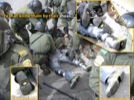

Members of the government sponsored provocateur group “The Black Bloc” rioting in London. Image from Wikipedia.
There are many potential blockages to the effectiveness of political activists, but such blockages can be circumvented and effectiveness of activists can be improved.
This article summarizes issues of political activism, including explaining how activist groups are infiltrated by Establishment organizations using provocateur groups and other methods, the effects of activist communication styles, and other issues.
Article Notes
new:
September 23, 2022 - Updated the article text, fixed technical issues with the article.
Selected information from this article:

This article is a study of potential types of politically motivated communication styles and the practical voting results arising due to such communication, by means of graphing theoretical voting results.
Communication style can be “communicative” to win the support of those being communicated with, or “solidifying” which entrenches people’s opinions on both sides of an issue. This article describes aspects of the two styles and conducts a theoretical study of the practical voting results of the styles being used against each other. It is shown by graphing theoretical voting results that effective “communicative” style will always trump the effects of “solidifying” style.
Communication style can be “communicative” to win the support of those being communicated with, or “solidifying” which entrenches people’s opinions on both sides of an issue. This article describes aspects of the two styles and conducts a theoretical study of the practical voting results of the styles being used against each other. It is shown by graphing theoretical voting results that effective “communicative” style will always trump the effects of “solidifying” style.

This video clip describes the government sponsored provocateur group “The Black Bloc” (spelled in this video “The Black Block”) rioting in the streets, smashing windows, and setting fire to police cars on the streets of Toronto for an hour and a half while police only watched from a distance during the June 2010 Toronto G20 economic summit.

This video compilation from the Alex Jones documentary Police State II: The Takeover shows how demonstrations at the 1999 World Trade Organization (WTO) meetings in Seattle during the Clinton Adminstration were infiltrated by violent provocateurs sent by government groups in order to give law enforcement personnel an excuse to attack and suppress the peaceful legitimate protesters.
Video of the violence perpetrated by the group of over 30 government sponsored provocateurs is shown, followed by evidence including local news reports that shows how the group was housed and protected by law enforcement officials during the week of the demonstrations.
Video of the violence perpetrated by the group of over 30 government sponsored provocateurs is shown, followed by evidence including local news reports that shows how the group was housed and protected by law enforcement officials during the week of the demonstrations.

This video clip from the documentary “Behind the Big News” explains Council on Foreign Relations (CFR) connections to the anti-WTO movement which are meant to ensure continued propagation of globalist agendas.

Peaceful protesters have caught on video and thwarted attempts by “provocateur” officers to incite violence at a 2007 demonstration in Montebello, Canada. Video shows three men with faces masked by bandannas attempting to mingle with protesters while one held a rock in his hand, and after being confronted and exposed by peaceful protesters the men were “arrested” by officers who have been shown to be associated with them.
Solution to the sample problem: Create enough public interest to reach the goal state through the legislative process
The use of fraudulent voting machines by the United States Government has been covered by the mainstream media over the past years, including being featured on numerous news segments, weekly news shows, as well as the HBO documentary Hacking Democracy. Public awareness of the issue is increasing but the problem still has not been fixed.
A way to ensure proper legislation being enacted could be the idea of the creation of a “reality show” on a major television network which would demonstrate the way Congress works by following the process of a bill becoming a law, by using the example of a bill eliminating election fraud in the United States.
The show could define issues of current election fraud in the US, and then explain how the proposed legislation was formulated and how it would eliminate the problem. The show would follow the passage of the Bill through each of the steps of the legislative process, including the approval process of the various committees followed by debate and voting on the bill in both houses.
It would be helpful for the show to be “multi-part,” with each episode airing soon after being taped in order to generate increasing public interest and about the progress of the bill. The show could include many interviews with individuals in Congress explaining why or why not they are voting for the legislation. Such media attention would force more Congresspeople to vote against the corrupting influence of those they are unethically indebted to.
The show could also focus on a variety of other issues such as the corrupting influence of special interest groups, political action committees, controlling organizations such as the Council on Foreign Relations (CFR), the abuse of “earmarks” by congresspeople, as well as the lack of transparency of the activities of members of Congress.
It would be important for the show to be aired on as mainstream of a television network as possible, and it would be important for the show to have entertainment appeal for audiences who currently view such shows as “American Idol,” “Survivor,” and “The Apprentice.”
Creation of the show may create conflicts of interests for groups who have influence over the content which the television networks present, so public activism by well-known entertainers to create a public demand for the show being created would be helpful, and it would draw even more attention to the show when it is finally aired.
The use of fraudulent voting machines by the United States Government has been covered by the mainstream media over the past years, including being featured on numerous news segments, weekly news shows, as well as the HBO documentary Hacking Democracy. Public awareness of the issue is increasing but the problem still has not been fixed.
A way to ensure proper legislation being enacted could be the idea of the creation of a “reality show” on a major television network which would demonstrate the way Congress works by following the process of a bill becoming a law, by using the example of a bill eliminating election fraud in the United States.
The show could define issues of current election fraud in the US, and then explain how the proposed legislation was formulated and how it would eliminate the problem. The show would follow the passage of the Bill through each of the steps of the legislative process, including the approval process of the various committees followed by debate and voting on the bill in both houses.
It would be helpful for the show to be “multi-part,” with each episode airing soon after being taped in order to generate increasing public interest and about the progress of the bill. The show could include many interviews with individuals in Congress explaining why or why not they are voting for the legislation. Such media attention would force more Congresspeople to vote against the corrupting influence of those they are unethically indebted to.
The show could also focus on a variety of other issues such as the corrupting influence of special interest groups, political action committees, controlling organizations such as the Council on Foreign Relations (CFR), the abuse of “earmarks” by congresspeople, as well as the lack of transparency of the activities of members of Congress.
It would be important for the show to be aired on as mainstream of a television network as possible, and it would be important for the show to have entertainment appeal for audiences who currently view such shows as “American Idol,” “Survivor,” and “The Apprentice.”
Creation of the show may create conflicts of interests for groups who have influence over the content which the television networks present, so public activism by well-known entertainers to create a public demand for the show being created would be helpful, and it would draw even more attention to the show when it is finally aired.

